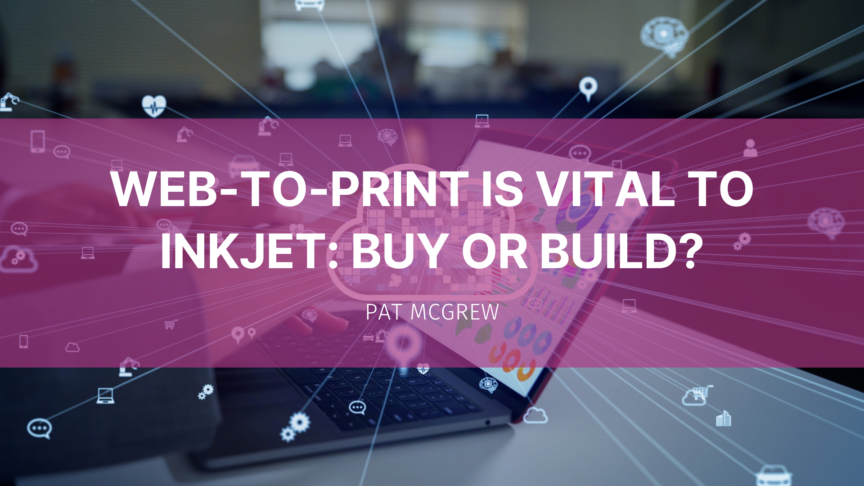Every inkjet print business has a selling methodology. Some are more disciplined than others. Many have tenured sales teams who hunt for new relationships and farm the relationships they have. Augmenting the people, companies have added digital storefronts or web-to-print installations. Many have multiple web-to-print solutions installed over time to meet specific needs. As we start the new year, it is time to assess your relationship with your portal!
First, some definitions to guide our discussion. A digital storefront is a term applied to any online ecommerce environment. We sometimes use the term in the print industry to refer to environments that serve large enterprise clients and integrate into the back office. But as web-to-print solutions have become more robust, it is now a more complicated distinction. For our purposes, we want you to think about the processes you use to capture work using a web-based user interface, whether on the World Wide Web or an intranet that faces internal clients, no matter what you call it.
Your web-to-print solution is a platform. It may be based on software your team wrote that sits on a local server. It may use a web-to-print solution you purchased from a vendor that sits on your server. It could be a solution that is bundled into other workflow software from one of your vendors. It could also be cloud-based and provided using the Software as a Service model. Take a moment and look at your web-to-print environment. How many solutions do you support? Is yours sitting on a local server or in the cloud? Perhaps both?
Step 1: Make a list of what you have and why you have it. Make a note if they are attached to an ecommerce system, your accounting back-end, or they stand alone without integration.
The best practice is for web-to-print solutions to include the ability to create unique customer-facing user interfaces and link to the back-office accounting systems for automated invoicing. Some platforms include online design tools, proof and approval tools, scheduling tools, and the ability to connect to real-time inventory availability. What can your web-to-print do?
Step 2. What is missing from your web-to-print ecosystem? What are you doing manually? What makes you long for some other system to manage online orders, proofs, approvals, estimating, and payment? Where is the friction?
Now it is time to do some thinking. Whether you have a single web-to-print system or multiple systems, if you have more than a few things on your friction list, it’s time to consider making a change. Friction costs money. People take time to resolve the friction. They create work arounds. Things that should be automated but become manual add hidden costs that aren’t accounted for in job estimates.
The question is – are you using what you have to the fullest extent, leveraging available automation, and working toward consolidating on a single system? If the answer is yes, but there are still deficiencies, it may be time to revisit your web-to-print environment, beginning with the question – should you look for a customized solution, or should you buy an off-the-shelf product?
If you operate a shop with a well-defined product catalog, a web-to-print solution from one of the well-known vendors could be perfect for you. Many have solutions that are comfortable in complex shops where there is everything from manuals and marketing collateral to wide-format signage. The essential element of buying off-the-shelf solutions is how well you can define every product you sell and how well you can integrate your web-to-print solution into your estimating, prepress, proof and approval, and financial systems. The best off-the-shelf solution in the world stops performing effectively if it is not integrated and maintained.
This brings us to the idea of a customized solution that may come with more help to integrate and maintain. There are web-to-print specialists in the market with frameworks that allow them to review your needs and develop a solution using Agile and Agile-like development. Companies that use this approach typically have libraries of routines developed over the course of serving their clients that can be leveraged for new engagements.
If you are a company that sells vehicle wraps, signage, direct mail, static marketing collateral, and short-run books, finding an off-the-shelf solution could be a challenge. Such diversity could be why there are multiple solutions installed. Working with one of the companies that have a platform to speed development could be what you need to become more efficient, more automated, and more profitable.
If you have a story to share, drop a comment below!

